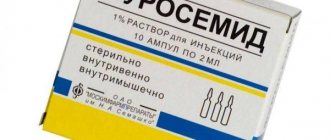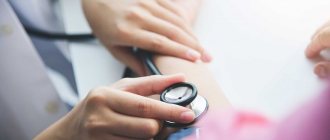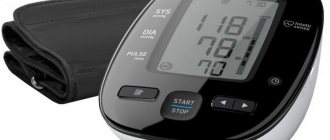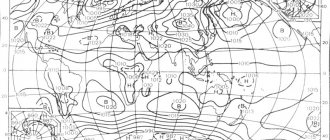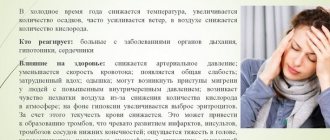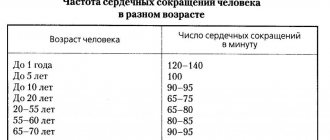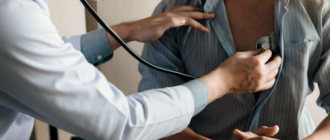Home — For the public
- Map of medical organizations
- Vaccination
- Clinical examination
- Fluorography
- Addresses and opening hours of clinics
- Emergency rooms
- Oncology
- Where to take an HIV test
- Healthy child's office
- Services
- Prevention of CVD
- Disease Prevention
- World Patient Safety Day
- Newspaper "Medical News"
- specialist
- School of Health
— Disease prevention
- HIV infection
- All about vaccination
- All about proper nutrition
- Hepatitis
- Flu
- Dementia
- Schoolchildren's health
- STD
- Tick-borne encephalitis
- Whooping cough
- Measles
- Legionellosis
- Meningococcal infection
- Oncology
- Acute intestinal infection
- Pediculosis
- First aid
- Pneumococcal infection
- Pneumonia
- Prevention of rabies
- Dependency Prevention
- Rotavirus infection
- Diabetes
- Cardiovascular diseases
- Injuries
- Tuberculosis
- Tularemia
- Physical activity
- Obstructive pulmonary disease
- Exotic infections
- Ecology
- Why is swimming in ponds dangerous?
— Cardiovascular diseases — How to quickly lower blood pressure at home
Consistently high blood pressure is a pathological condition indicating the development of a dangerous disease - hypertension. Arterial hypertension is the most common disease in the world. Without timely treatment, hypertension causes complications such as diseases of the cardiovascular system, kidney failure, and loss of vision.
The importance of high blood pressure as a risk factor in the development of cardiovascular diseases increases with age.
What pressure is considered high
The perception of high blood pressure may vary from person to person. For example, some patients experience discomfort already at 130/85 mm. rt. Art., while in others even a pressure of 145/95 does not cause changes in well-being. In medicine, there is a diagnosis of “arterial hypertension,” which involves an increase in systolic pressure from 140 mm. rt. Art. and and/or 90 mm. rt. Art. and above - diastolic. There are two meanings, because a person’s heart either contracts (then the blood pressure becomes higher) or relaxes (the pressure becomes lower). The contraction of the heart muscles and the ejection of blood is called systole (hence the “systolic” pressure), and the relaxation and filling of the heart cavity with blood is called diastole (Fig. 1).
Figure 1. Heart function - systole and diastole. Source: Prog. Biophys. Mol. Biol. 2021, 138, 45–58
It is important to understand that the criteria for arterial hypertension are largely conditional.
Moreover, even normal pressure has several gradations (Table 1) Table 1. Classification of blood pressure levels (mm Hg) *Isolated systolic hypertension, in turn, is divided into three degrees depending on how elevated the systolic HELL.
| Blood pressure categories | Systolic blood pressure | Diastolic blood pressure |
| Optimal | below 120 | below 80 |
| Normal | 120-129 | 80-84 |
| High normal | 130-139 | 85-89 |
| Arterial hypertension 1st degree | 140-159 | 90-99 |
| Arterial hypertension 2 degrees | 160-179 | 100-109 |
| Arterial hypertension 3 degrees | 180 and above | 110 and above |
| Isolated systolic arterial hypertension | 140 and above | below 90 |
How to measure blood pressure
You can measure your blood pressure at home using a special device called a tonometer. High blood pressure can pose a health hazard, so every home medicine cabinet should have a blood pressure monitor. There are two types of tonometers:
- Mechanical. Good old classic. Less convenient to use, but give more accurate results.
- Electronic (automatic and semi-automatic - Fig. 2). Battery operated. The main advantage is that you do not need to listen to heartbeats yourself (which is sometimes quite difficult to do due to weak pulse filling). But such devices also have a big disadvantage - the measurement results are not always accurate. When re-measured, the numbers may vary slightly.
Figure 2. Electronic automatic blood pressure monitor. Source: CC0 Public Domain
How to use a mechanical blood pressure monitor
In order to measure pressure with a mechanical tonometer (video 1), you need:
- sit in a comfortable position and relax, while your arm should be bent at the elbow joint and lie on a flat surface,
- remove the shoulder part of the arm from clothing and fasten the cuff on it (its lower edge should be 3-4 cm above the elbow bend),
- place a stethoscope (phonendoscope) on the inside of the elbow joint in the place where the pulse can best be felt,
- using a hand pump, start pumping air into the cuff,
- bring the pressure gauge needle to values exceeding the expected pressure by 30-40 mm. rt. Art. (for example, if the patient’s normal blood pressure is 135/90, then you can stop at 170),
- slowly release air from the cuff, waiting for tones to appear - these are the sounds of a heartbeat; their appearance marks the boundary of systolic pressure, and their disappearance marks the boundary of diastolic pressure. Simply put, if tones appeared at number 150 and disappeared at number 100, then the result is 150/100).
Video 1. How to correctly measure pressure with a mechanical tonometer.
In the absence of a stethoscope, the upper (systolic) pressure can be measured by monitoring the behavior of the needle. You need to notice the reading when she starts to twitch. However, this method is not very reliable, since the needle often begins to tremble before the first strong audible beat of the pulse.
If you want to visit the toilet before measuring your blood pressure, it is better not to deny yourself this, since an overfilled bladder increases your blood pressure by about 10 points. It is also important not to take the measurement immediately after intense physical activity or immediately after sleep. If the pressure is too high or too low, the result should be rechecked 3 times with an interval of 5-10 minutes. After that, calculate the average values - this is your result. Morning pressure should be measured before and after breakfast, also taking the average value.
Normal blood pressure numbers
The movement of blood through a closed circulatory system is the joint work of the heart and blood vessels.
There are two indicators of blood pressure:
- Systolic (upper) pressure is formed during the period of myocardial contraction, when blood from the left ventricle is ejected into the vascular bed.
- Diastolic (lower) pressure is maintained in the vessels during the diastole phase - the period of relaxation of the heart after contraction.
The unit of measurement for blood pressure is the millimeter of mercury (mmHg). This is due to the fact that the first device in history to measure blood pressure was mercury, and the result was determined by the level of the mercury column. The International Association of Cardiology has determined the norm for blood pressure to be no higher than 130/80 mmHg.
In a healthy person, blood pressure changes during the day under the influence of external and internal factors: physical activity, stressful situations. This is a normal adaptive reaction. The body contains mechanisms of nervous and humoral regulation that return blood pressure to its original level after the cessation of the action of provoking factors.
Consequences of high blood pressure
High blood pressure is dangerous primarily because blood vessels lose their elasticity, and this can lead to their rupture and stroke (impaired blood supply to the brain). In addition, increased blood pressure is fraught with the development of the following complications:
- visual impairment due to deterioration of blood supply to the retina,
- complete loss of vision as a result of hemorrhage in the vitreous and/or retina,
- angina pectoris - pain in the heart due to impaired blood supply to the myocardium,
- hypertrophy of the left ventricle of the heart,
- heart attack - death of a section of the heart muscle as a result of disruption of its blood supply,
- heart failure - the systole-diastole cycle, which we wrote about above, is disrupted, which leads to a deterioration in the outflow of blood and filling of the ventricles,
- renal failure - develops as a result of deterioration of blood supply to the kidneys,
- deterioration of the general condition of the nervous system (irritability, fatigue, tendency to depression),
- disruptions in brain function as a result of deterioration of the cerebral vessels can be fraught with a decrease in intellectual abilities up to the development of so-called vascular dementia (dementia resulting from chronic cerebral circulatory failure).
Right ventricular hypertrophy
Blood from organs and tissues that deplete oxygen reserves and give off carbon dioxide enters the right atrium.
Then it passes through the right ventricle to the lungs to be enriched with oxygen. With minimal malfunctions (with an increase in diastolic pressure), the myocardium begins to work harder, which provokes pathological changes. The mass of the cardiac ventricle begins to increase and the muscle fibers thicken. These changes are called ventricular hypertrophy. The initial stage of the disease does not have pronounced symptoms. They appear later. It becomes difficult for the patient to breathe, shortness of breath occurs, the heart rate increases, dizziness appears with possible loss of consciousness, and the limbs swell.
The consequences of hypertrophy of the right ventricle of the heart are very destructive for the body. Its work is responsible for the pulmonary circulation, which has lower pressure. It connects the myocardium with the lungs, therefore, with hypertensive changes that increase the right ventricle, pulmonary pressure intensifies, which provokes the development of diseases of the bronchopulmonary system.
Cardiac right ventricular hypertrophy is a very rare syndrome that leads to serious illness. If the first signs of the disease occur, you should contact a cardiologist to establish an accurate diagnosis and prescribe rational treatment.
Dangerous symptoms
An elderly woman with a severe headache.
Photo: dusanpetkovic / freepik.com Some people have asymptomatic increases in blood pressure, but in most cases the following signs are observed:
- weakness and fatigue,
- pressing or throbbing headache in the occipital and/or temporal part,
- nausea,
- dizziness,
- chest pain,
- noise in ears,
- shortness of breath during habitual physical activity,
- numbness of the limbs,
- blurred vision, flashing spots before the eyes,
- irritability,
- increased sensitivity to light (sometimes to sounds).
The appearance of even one or two of the symptoms listed above should be a cause for concern. Some people prefer to simply “endure” an episode of high blood pressure “so as not to be poisoned by all this chemistry” (that is, pills). But such manifestations cannot be ignored, since, as we said above, high blood pressure is fraught with a number of dangerous consequences.
How to reduce lower blood pressure
The natural desire of a healthy person is to bring the body’s indicators back to normal. Before taking pills for blood pressure, you need to remember how to reduce it using traditional medicine at home. The use of chemistry gives a guaranteed effect, but has many side effects on the body. You can reduce your lower pressure by adhering to the following list of rules:
- the diet should contain fresh vegetables and fruits plus some fermented milk products;
- Eliminate sugar (can be replaced with honey);
- drink decoctions of medicinal herbs, diuretics or lowering blood pressure;
- drink beet juice to strengthen the walls of blood vessels - 1 tablespoon half an hour before meals;
- reduce the load on the kidneys.
How to lower lower blood pressure without lowering upper blood pressure
Sometimes you need to lower the DD without lowering the top one. Even in this case, you can reduce its level at home. This method is recommended by almost all experts. You need to lie on your stomach and place an ice bag or some frozen product on your neck. Stay in this position for about half an hour. Afterwards, massage the cooled area using cream or aromatic oils. In 90% of cases, increased DD decreases without the upper one.
- Causes of increased heart pressure, methods of treatment and first aid for yourself
Reducing blood pressure at home
Many people who have not previously experienced problems with blood pressure or simply did not pay attention to headaches and other symptoms usually do not know what to do if the tonometer readings confirm unpleasant fears. The main rules of behavior: calm and deep breathing. To make it easier for the brain to receive oxygen, the apartment of a hypertensive patient should be well ventilated. A cold compress on the neck and forehead will help relieve the condition.
As a one-time help, you can take a drug from the group of angiotensin-converting enzyme blockers in combination with an anesthetic drug (paracetamol, ibuprofen). However, cardiologists do not recommend treatment in this way on a regular basis. The choice of medications to lower blood pressure should be agreed with a doctor - he will be the one who will help you choose the necessary drug, which should always be in your home medicine cabinet.
Pills and medicines
Drugs to lower blood pressure are divided into several groups. Let's look at them in detail.
ACE inhibitors
Angiotensin-converting enzyme inhibitors are one of the most popular drugs in the treatment of hypertension. These drugs interfere with the conversion of the enzyme angiotensin 1 to angiotensin 2, which narrows the lumen of blood vessels. The mechanism is simple: the blood vessels do not narrow - the pressure does not increase. There is also a gradation among ACE inhibitors:
- First generation drugs: Captopril, Benazepril, Zofenopril.
- Second generation drugs: Lisinopril, Ramipril, Enalapril.
- Third generation drugs: Monopril, Fozinap, Fozinotec.
Alpha blockers
The sympathetic-adrenal system is responsible for changes in blood pressure in the body. The adrenal glands and hypothalamus produce adrenaline and norepinephrine, neurotransmitters that, among other things, regulate the functioning of the cardiovascular system. They stimulate the heart rate and increase blood pressure.
Alpha blockers, as the name suggests, help reduce the sensitivity of specific alpha receptors to adrenaline and norepinephrine, thereby reducing blood pressure. The most well-known drugs are Doxazosin and Prazosin.
Beta blockers
Unlike alpha-blockers, drugs in this group block beta receptors located not only in the arteries, but also in the heart. The principle of action is the same, as well as the therapeutic effect: dilation of blood vessels, facilitation of blood flow and subsequent decrease in pressure, as well as a decrease in the frequency and force of contraction of the heart muscle. Preparations:
- Bisoprolol,
- Betaxolol,
- Metoprolol,
- Nebivolol.
Diuretics
Due to their diuretic effect, diuretics reduce the load on the heart. In addition, they have a vasodilating effect, which, as we already know, is also used to reduce blood pressure. Experts have different opinions regarding the use of diuretics to lower blood pressure: some consider them first-line drugs along with adrenergic blockers, others are convinced that the use of diuretics in the treatment of hypertension is a thing of the past, since drugs in this group disrupt the electrolyte balance. The following groups of diuretics are distinguished:
- Loopbacks. They have a strong but short-term effect. In the treatment of arterial hypertension, they are used in patients with renal failure. The most commonly used are Furosemide and Torasemide.
- Potassium-sparing. Unlike other diuretics, they do not remove potassium from the body, although their diuretic effect is slightly weaker. Drugs: Spironolactone, Amiloride.
- Thiazide. This type of diuretic is used most often in the treatment of hypertension. The potency of action is inferior to loop diuretics, but superior to potassium-sparing diuretics. The most common drugs: Hydrochlorothiazide, Cyclopenthiazide.
- Osmotic. This type of diuretic for hypertension is prescribed much less frequently and is usually used in hospital treatment. The most commonly used are Sorbitol and Mannitol.
Calcium antagonists
Since imbalance of calcium and its excess in the blood plasma is considered a predisposing factor to increased blood pressure, drugs of this group are actively used in the treatment of hypertension. They prevent calcium from entering cells, thereby normalizing blood pressure. And there is a gradation here:
- Dihydropyrines: Amlodipine, Nifedipine.
- Phenylalkylamines: Verapamil, Gallopamil.
- Benzodiazepines: Diltiazem, Clentiazem.
Heart medications for high blood pressure
For hypertension, ACE inhibitors, alpha-blockers, beta-blockers and calcium antagonists are used - all of them are “heart” drugs, since they are prescribed in the treatment of pathologies such as coronary heart disease, left ventricular dysfunction and chronic heart failure. In addition to the medications already listed above, you can add here:
- Lercanidipine,
- Valsartan,
- Aliskiren,
- Carvedilol.
The choice of medications to lower blood pressure should be agreed with your doctor. Photo: towfiqu999 / freepik.com
Folk remedies for quickly reducing blood pressure
If there are no medications at hand, and the increase in pressure does not indicate a hypertensive crisis, you can use traditional methods, although they are inferior in effectiveness to drug treatment. Here are some of the most common methods:
- Mustard plasters on the shin. Due to blood flow to the legs, a slight hypotensive effect is achieved.
- Compress with apple cider vinegar. Folded gauze or a towel is soaked in apple cider vinegar and applied to the feet. From the point of view of evidence-based medicine, the method is questionable, but some patients claim that it has an effect.
- Breathing exercises. For several minutes, you need to inhale and exhale slowly, taking a comfortable position and closing your eyes. Exhale should be done with the stomach, not the chest. This relieves nervous tension and improves peripheral blood supply.
- Pressure also helps reduce massage of the collar area. However, unlike the classic version, stroking movements should be performed with a little more pressure and directed downwards - from the neck to the lower back.
Properties of tablets for hypertension
Not every drug produced by a pharmaceutical company is suitable for every patient.
Medicines differ in their mechanism of action and main substance. This leads to restrictions that are taken into account when selecting therapy. Drugs that lower blood pressure act primarily on the vascular wall, myocardium and other organs. When selecting medications, possible concomitant pathologies are taken into account. For this purpose, tablets for high blood pressure are divided into several groups according to their properties:
- Long-lasting. Their therapeutic effect is achieved through slow absorption from the digestive system, which does not allow blood pressure to rise above normal values. It is possible to reduce the indicators by taking the prescribed dosage of the drug once, it is calculated per day.
- Fast action. Medicines help to avoid complications that are possible with sudden surges in blood pressure. Many patients with arterial hypertension are interested in how to quickly bring down high numbers without harm to health. Tablets from this group are distinguished by the possibility of treatment only if necessary. They are considered emergency drugs in the event of a hypertensive crisis in order to quickly reduce high blood pressure.
There are no remedies that will always be used by the same patient. Only a doctor can tell which high blood pressure pills are the most effective in each individual case. Any medication is prescribed to the patient taking into account age, possible complications and concomitant diseases. When the body gets used to the components, the prescribed regimen for therapy is often changed.
Urgent Care
If the pressure is significantly elevated, the patient should first calm down, and then ensure a flow of fresh air into the room and take a comfortable position. Clothes should be loose, special attention should be paid to the collar.
The sequence of actions to alleviate hypertension is very simple:
- Calm down, don't panic.
- Organize access to fresh air (open a window, go outside).
- Optimize breathing (deep breath, hold, exhale).
- Apply a cold compress to the forehead, temples and back of the neck.
- Take a sedative: 50 to 100 drops of Valocordin or Corvalol, extract or tincture of motherwort (valerian).
- Wait 20-30 minutes, measure the pressure again.
- In case of high blood pressure, take medicine to lower blood pressure (for example, from the group of ACE blockers).
When to call an ambulance
If 30-40 minutes after taking the medication the condition does not improve, you should call an ambulance. Indications for calling are blood pressure of 180/110 or higher, shortness of breath, headache, nausea, rapid heartbeat and chest pain. You need to call 003 or 112 and describe all the symptoms to the dispatcher in detail.
Injections for hypertension
Injections are used for hypertensive crises (a serious condition caused by an increase in blood pressure from 180/110 and above) to quickly reduce blood pressure. During the Soviet Union, the favorite remedy for emergency doctors in such situations was a combination of papaverine, metamizole sodium and diphenhydramine, known as “troychatka.” It is still used today, but modern cardiologists insist that there is no need to inject this mixture into everyone: first of all, it is important to find out the reason for the sharp increase in blood pressure - this will help to choose the right drug.
For example, if the attack was provoked by severe nervous tension, then the drug of choice will be diazepam (administered both intramuscularly and intravenously). In case of a convulsive form of crisis, a so-called hot injection - magnesium sulfate (slowly intravenously) is added to diazepam.
A hypertensive crisis can be caused by excess fluid accumulation (edematous, or water-salt form). In this case, an injection of furosemide is given in combination with nifedipine (sublingually).
In the neurovegetative form (adrenal crisis), sublingual nifedipine is usually used first, and in the absence of the expected effect, an injection of clonidine is given.
Diet
It is necessary to limit the consumption of salt and foods rich in sodium (fatty meat, seafood, eggs). Alcohol, coffee and energy drinks are also not recommended for consumption. The diet should be enriched with plant fiber and low-fat lactic acid products. It is also necessary to consume more foods rich in potassium (bananas, spinach, garlic).
People with high blood pressure are advised to eat more vegetables and fruits. Photo: prostooleh / freepik.com
Lifestyle
It is strongly recommended to quit smoking. You need to learn to avoid stress and sleep at least 8 hours a day. To strengthen the cardiovascular system, you need to engage in moderate physical activity, since physical inactivity is one of the factors predisposing to the disease. In addition, physical activity combined with a healthy diet helps normalize body weight. This is a relevant question because overweight people are predisposed to hypertension. Nasal sprays should be used with caution - they increase blood pressure (not to mention the ability to cause addiction). It is recommended to take dietary supplements such as L-carnitine, hawthorn extract, coenzyme Q10 and fish oil.
Products that affect blood pressure
Not only medications, disturbances in the functioning of certain organs and experiences, but also food products available in almost every refrigerator can increase or decrease blood pressure:
- Ginger. It relieves vascular spasm, making them more elastic and pliable in response to the influence of blood flow, as well as to temperature conditions. If the vessels can dilate in a timely and uniform manner, this will not cause high blood pressure on their walls.
- Garlic not only thins the blood and helps fight blood clots, but also helps lower blood pressure.
- Lemon, containing a large amount of vitamin C, provides the walls of the blood flow system with a reliable building material, due to which arteries, veins and blood vessels gain strength and elasticity.
People suffering from hypertension need to give up chocolates in particular and sweets in general. The sharp release of energy that occurs when consuming glucose also provokes a jump in blood pressure. You can eat dessert, but only on a full stomach, and in moderation.

